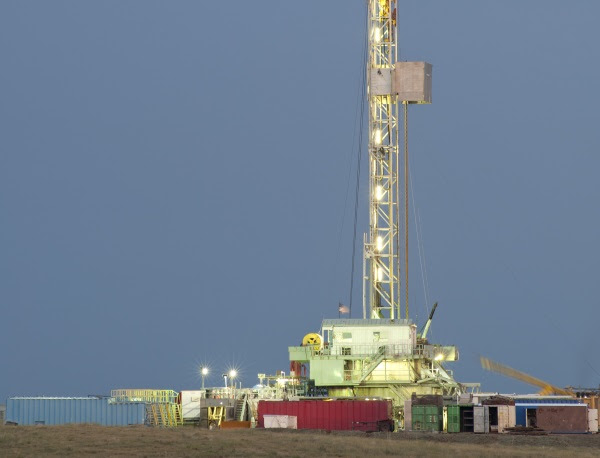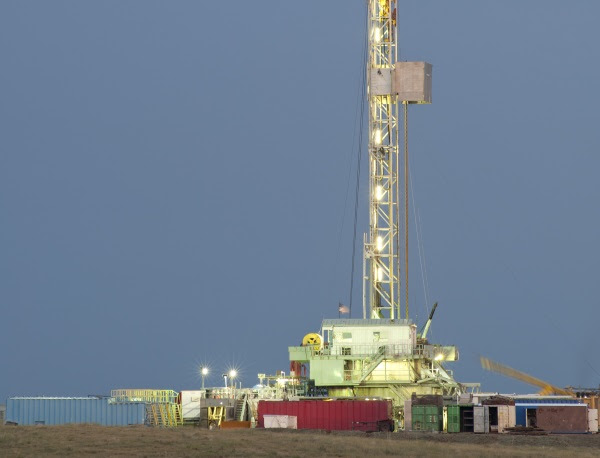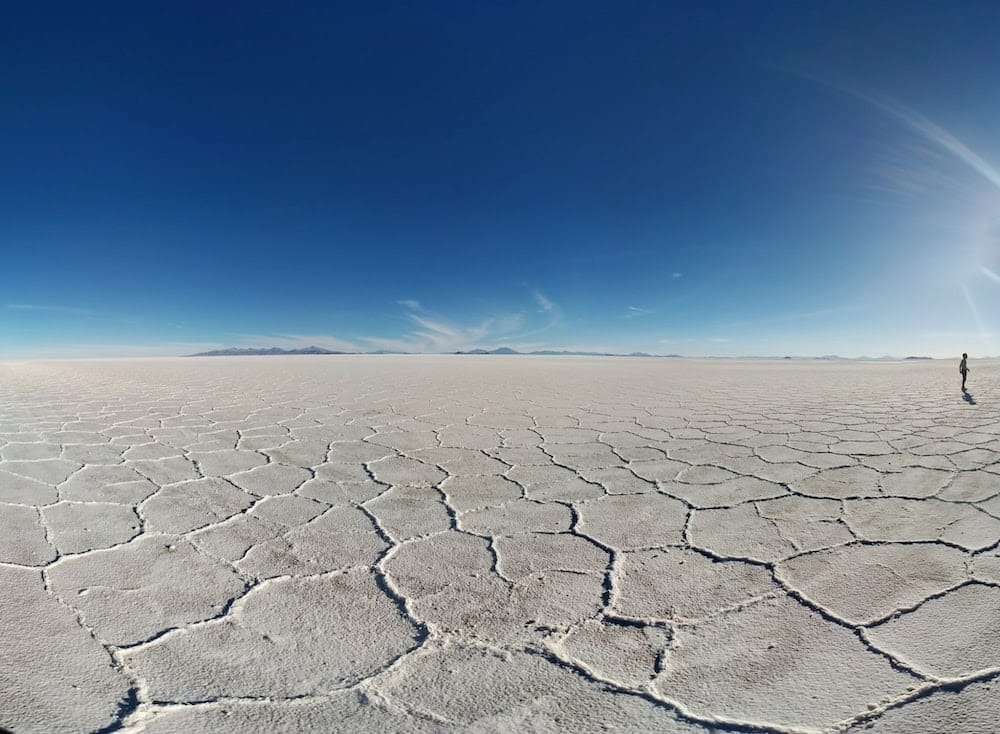
The expansion of shale gas extraction in the United States in the first decade of the 21st century has turned the country’s energy balance upside down. It’s unused in situ volumes are beginning to swell the global market for liquefied natural gas (LNG). But what is shale gas? Where does it come from? How is it extracted? And what are the effects on the environment?
In 2000, natural gas, essentially methane, was extracted from three sources: conventional hydrocarbon reservoirs, petrochemical processing of heavy hydrocarbons and biogas. Over the last ten years, as fossil fuels have become increasingly scarce, unconventional gas reservoirs have been developed, mainly in the United States. In these reservoirs, the gas is trapped in a microscopic porosity that is not easily accessible, as the rock is only slightly permeable. This hydrocarbon is known as shale gas.
Natural gas, or methane, is a fossil fuel produced by exploiting so-called conventional geological reservoirs, either alone or in combination with other hydrocarbons (condensates, oils). In 2017, demand for natural gas totalled 3,680 billion m3 (Gm3), with global but heterogeneous growth: +9% per year in China between 2006 and 2016; but -2.3% in Europe over the same period.
Globally, shale gas resources are estimated at 207,000 Gm3 or as much as proven conventional gas resources. By 2035, according to the International Energy Agency (IEA), shale gas could account for over 20% of investment in the fossil gas exploitation sector, representing an estimated $2,400 billion over the period 2014-2035.
The debate surrounding the exploitation of unconventional hydrocarbon resources is a hotly contested one. Different political and industrial visions clash. Since the early 2000s, the development of shale gas in the United States has changed the country’s energy balance from a natural gas importer to an exporter in 2017.
In the rest of the world, the low level of scientific knowledge about the medium- and long-term impacts of shale gas development, and the anticipated environmental and industrial risks, have resulted in a halt to development and even exploration. In Europe, the risks associated with shale gas production have slowed or even halted exploration in France and Bulgaria, while two other countries, England and Poland, have begun an exploration phase. In Asia, exploration has begun and is set to expand over the coming years.

Unconventional reservoirs are characterized by very low permeability, and the gas, trapped in microscopic porosity that is difficult to access, is known as shale gas. Hydraulic fracturing, the main technique currently used to exploit this resource, involves drilling into low-permeability strata. This technique is also used to exploit conventional reservoirs or geothermal fields. In situ fracturing, induced by excess pressure from the drilling fluid, creates a draining network of fissures, enabling natural gas to reach the main well, where it is collected, transported and exploited.
The most recent technologies use horizontal wells a few kilometers long, with a vertical main well from which several horizontal wells radiate. A single surface well thus exploits several square kilometers underground. Two technological breakthroughs – the use of large volumes of fluid and horizontal drilling – have enabled this unconventional resource to be exploited in the USA (Figure 2).
As our knowledge of shale gas advances, it should be noted that exploitation in the United States has been carried out by private companies, who protect their technologies with patents. Academic research has only recently turned its attention to this technology.
The scientific output of public research, and in part of private research, has evolved considerably. Before 2007, there were very few scientific publications on shale gas, between one and five a year. From 2007 onwards, the number of publications has grown exponentially. As a result, knowledge about shale gas is gradually entering the public domain, whereas before 2007 it was confined to industry.
Shale gas production soared in the United States from 2005 onwards, with the number of wells drilled increasing from an average of 1,200/year over the period 1990-2004, to almost 2,300 in 2012. After a slowdown due to falling gas prices, drilling resumed in 2017. At the same time, US natural gas production increased by 30%, with shale gas accounting for 60% of total production in 2017. Since 2009, the United States has become the world’s leading producer, ahead of Russia (Figure 3). The arrival of shale gas has led to overproduction on the American market, and gas prices have plummeted.
From, 2007, gas prices on the major international markets (Europe, Japan, United States) were globally correlated. In 2013, thanks to shale gas, the price of natural gas was three to four times cheaper in the United States, with consequences for the competitiveness of industries that consume large quantities of fossil fuels.
As a result, in 2013, the cost per kilowatt-hour for manufacturers was US$12 in the United States, compared with an average of US$46 in OECD countries. The competitive advantage is such that the United States is relocating several of its heavy industries (metallurgy, petrochemicals) to its territory. Overcapacity in the USA has led to a fall in gas prices, and the number of new drillings has been falling since 2013.
In early 2010, Josh Fox’s film Gasland launched the debate on the environmental consequences of hydraulic fracturing. One image went viral: a man turns on his sink’s water tap, approaches a lighter, and sees an orange flame shoot up around the water jet. This flame is the result of burning methane, which the film presents as coming from hydraulic fracturing near the house. The force of this image amplified the media publicity and cast opprobrium on shale gas development, highlighting the supposed environmental nuisance of hydraulic fracturing.

Photo courtesy of Ecoflight.
Fear of environmental impact on the one hand, and the nuisance envisaged for local populations on the other, led to opposition to the exploitation of this resource in France. As a result, the law of July 13, 2011, passed by a very large majority by the French National Assembly, relies on the precautionary principle to prohibit the exploitation of shale gas by hydraulic fracturing.
As a result of this law, the exploration permits that had been granted in mainland France could no longer be used. It does, however, authorize hydraulic fracturing for scientific research purposes. Finally, at the Conference of Environment in September 2012, President Hollande confirmed the cancellation of seven applications for exploration of non-conventional resources in mainland France.
Hydraulic fracturing causes several types of environmental stress: chemical, mechanical and toxicological; five types can be identified. Firstly, the circulation of fluids at depth can generate induced microseismicity. In effect, exploitation triggers small earthquakes, as do other technologies such as geothermal energy, dam impoundment or the exploitation of conventional gas resources.
Secondly, there is a risk of aquifer pollution. A third impact consists of gas leaks into the atmosphere, especially during the well operation phase. The final two impacts concern the production of large quantities of water that need to be treated before being reintegrated into the environment, and the use of land reserves and infrastructure to exploit and transport shale gas.
A major scientific debate is developing around environmental impacts such as the risk of triggering seismic activity, the need to treat large volumes of polluted water, or methane leaks into the atmosphere, which contribute to global warming.
Landscape sprawl and possible impacts on environmental quality and human health are also highlighted. On all these subjects, scientific knowledge is under construction; the scale of the public debate has prompted some private companies to publish their data. Several of these risks are described in greater detail below, and most could be anticipated before any exploitation.
Shale gas is seen by some countries as a new El Dorado, providing them with a fossil fuel resource at a competitive cost, enabling them to re-industrialize certain regions and develop their economies. On the other hand, low levels of knowledge about the medium- and long-term impacts of shale gas development, and the associated environmental and industrial risks, have slowed or even halted the process in other countries.
The need for new knowledge about this resource and its exploitation is growing. For example, the construction of a pilot site for research purposes, open to the academic community, would bring together the disciplines required for a better understanding of the underground and surface processes associated with the production of unconventional gases.
The results of such an approach would, on the one hand, inform public debate and ensure transparency of information, and on the other, provide arguments for legislators so that they can make informed decisions, and not just based on the precautionary principle. Such scientific enlightenment would contribute to public debate and thus to environmental democracy. Indeed, scientific controversies can no longer take place outside society.






